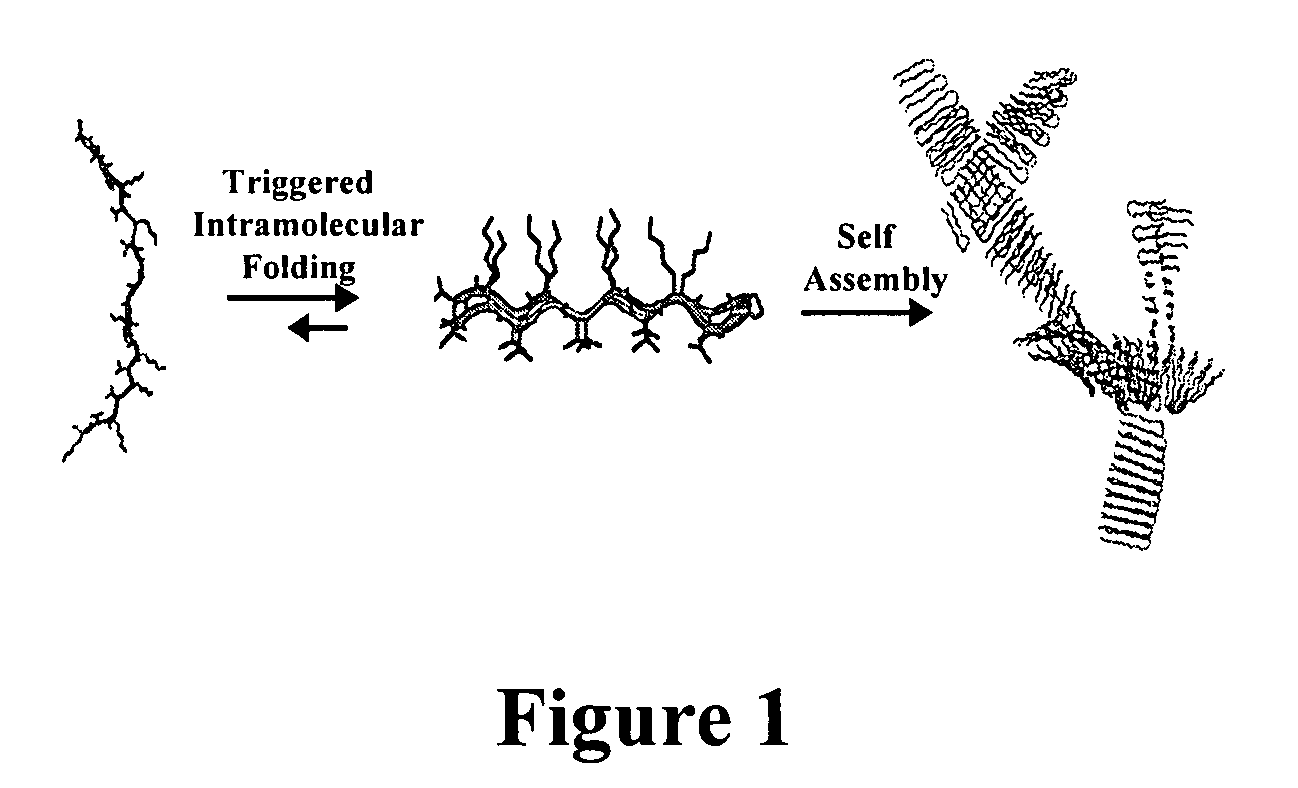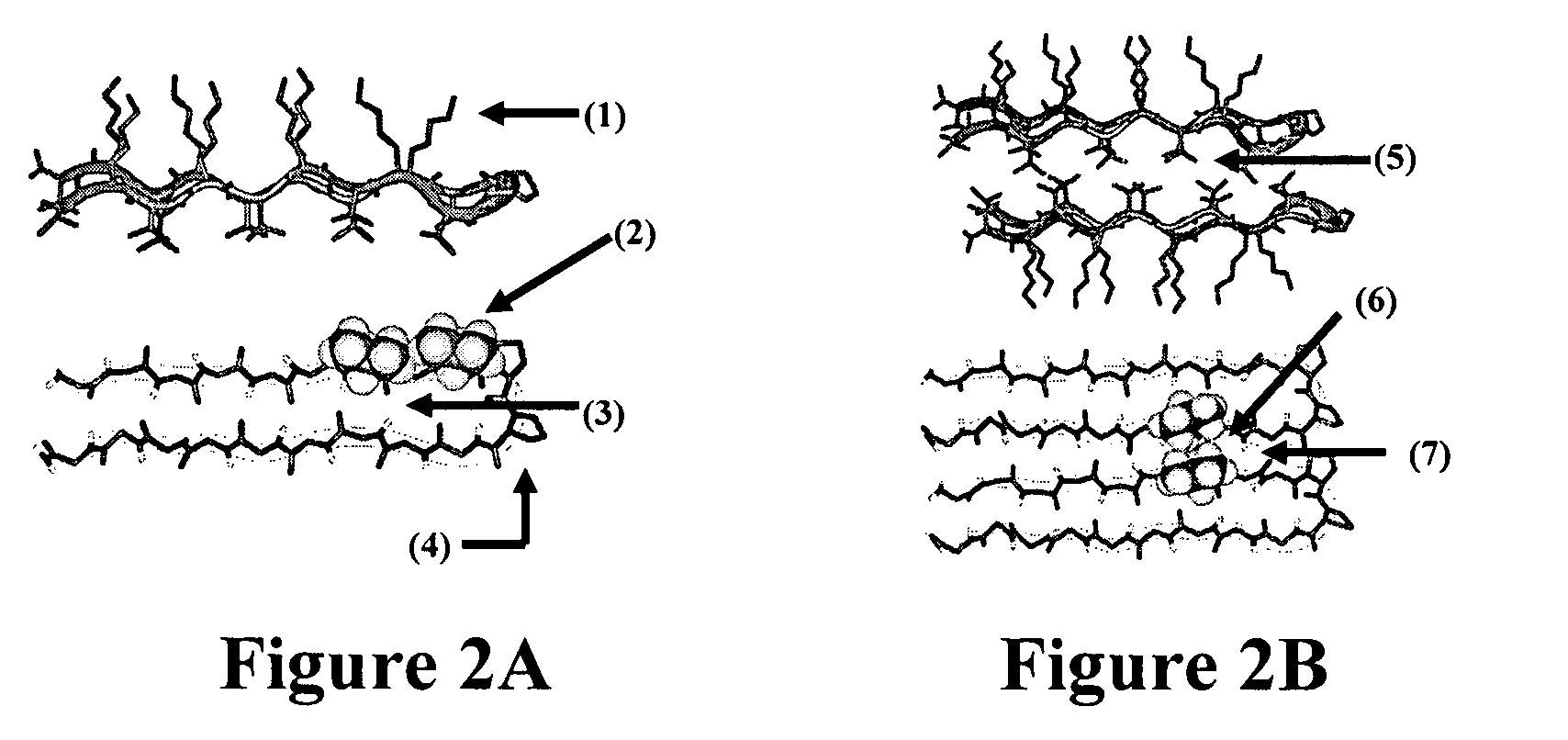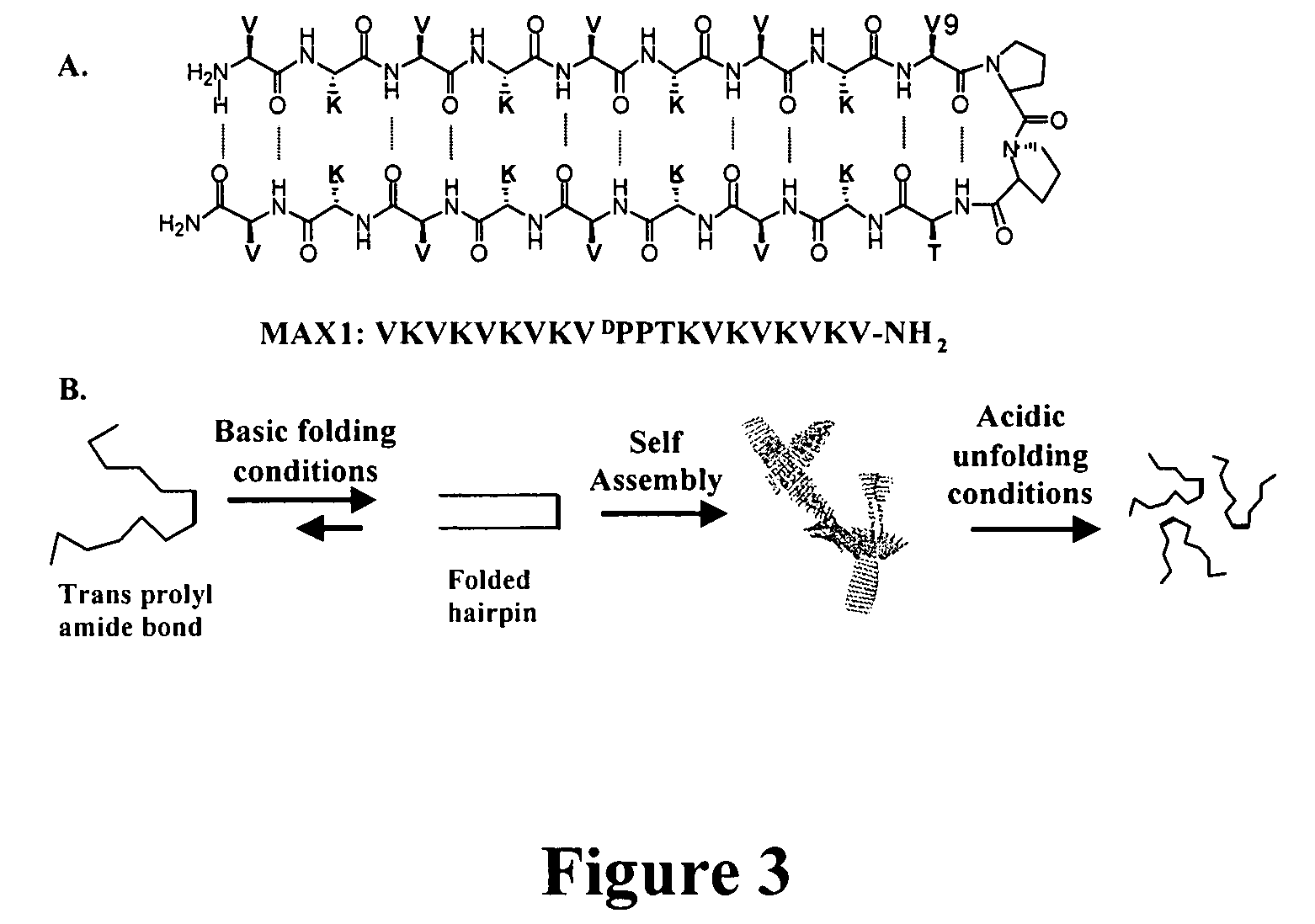Hydrogels and uses thereof
a technology of hydrogels and gels, applied in the field of hydrogels and uses thereof, can solve the problems of difficult comprehensively achieving desired material properties, difficult to achieve biocompatible materials, and mechanical rigidity of well hydrated materials, so as to promote adhesion and proliferation, and rapid isolation of compounds
- Summary
- Abstract
- Description
- Claims
- Application Information
AI Technical Summary
Benefits of technology
Problems solved by technology
Method used
Image
Examples
example 1
[0139]Intramolecular folding events, triggered by the presence of salt, induce the self-assembly of β-hairpin peptides into hydrogel networks at physiological conditions. At pH 7.4, low ionic strength solution conditions, dilute, homogeneous solutions of peptide (≦2 wt. %) exhibit the viscosity of pure water. Circular dichroism spectroscopy shows that at pH 7.4 in the absence of salt, peptides are unfolded. By raising the ionic strength of solution, electrostatic interactions between charged amino acids within the peptide are screened and a β-hairpin conformation is adopted. Folded β-hairpin molecules supramolecularly assemble via hydrophobic collapse and hydrogen bonding into a three dimensional hydrogel network. FTIR and x-ray scattering data demonstrate that these hydrogels are rich in β-sheet. Dynamic oscillatory Theological measurements demonstrate that the resultant supramolecular structure forms an elastic material whose structure, and thus modulus, can be tuned by salt conce...
PUM
| Property | Measurement | Unit |
|---|---|---|
| storage modulus | aaaaa | aaaaa |
| storage modulus | aaaaa | aaaaa |
| storage modulus | aaaaa | aaaaa |
Abstract
Description
Claims
Application Information
 Login to View More
Login to View More - R&D
- Intellectual Property
- Life Sciences
- Materials
- Tech Scout
- Unparalleled Data Quality
- Higher Quality Content
- 60% Fewer Hallucinations
Browse by: Latest US Patents, China's latest patents, Technical Efficacy Thesaurus, Application Domain, Technology Topic, Popular Technical Reports.
© 2025 PatSnap. All rights reserved.Legal|Privacy policy|Modern Slavery Act Transparency Statement|Sitemap|About US| Contact US: help@patsnap.com



